Estudio experimental sobre las características dinámicas inmiscibles y miscibles del CO2 y el petróleo crudo en un tubo visual delgado
Resumen
La inundación de CO2 para la recuperación de petróleo es un proceso dinámico que requiere más investigación sobre las características de cambio de la interfaz petróleo-gas, los procesos de transferencia de masa interfacial y la variación de la composición petróleo-gas durante el desplazamiento tanto inmiscible como miscible. Comprender estos factores es crucial para comprender mejor su impacto en la recuperación de petróleo mejorada con CO2 (EOR). Esta investigación adopta un aparato experimental de inundación visual miscible con CO2 desarrollado conjuntamente para estudiar las características dinámicas horizontales del CO2 y el petróleo crudo bajo diferentes presiones y caudales en un tubo visual delgado. A 10 MPa, los resultados de la estratificación del CO2 y del petróleo crudo indican que el experimento es una inundación inmiscible. El ángulo de contacto (7,9°) entre las dos fases de CO2 y el petróleo crudo a un caudal de 15 cm/min es mayor que el (5,2°) a 1,5 cm/min, y la escala de grises del CO2 aumenta a 100 cm/min. La cantidad, el contenido individual y la forma de los componentes de hidrocarburos ligeros y medios condensados en la pared interior del tubo varían con diferentes caudales. A 15 MPa, la aparición del intervalo de transición de CO2 y petróleo crudo demuestra que el experimento es una inundación miscible. A diferentes caudales, el ángulo de inclinación y la distribución de las franjas negras son diferentes. Todo el intervalo de transición se divide en 6 intervalos y el intervalo de transición se alarga al aumentar la velocidad del fluido. Los experimentos demuestran visualmente la aparición de la fase miscible e identifican la presión experimental y el caudal de fluido como factores clave que influyen en la miscibilidad del CO2 y el petróleo crudo.
Referencias bibliográficas
Brattekås, B., & Seright, R. (2023). A Review of Polymer Gel Utilization in Carbon Dioxide Flow Control at the Core and Field Scale. SPE Journal, 28(06), 3291-3307. https://doi.org/10.2118/217427-PA
Chen, X., Zhang, Q., Li, Y., Liu, J., Liu, Z., & Liu, S. (2024). Investigation on enhanced oil recovery and CO2 storage efficiency of temperature-resistant CO2 foam flooding. Fuel, 364, 130870. https://doi.org/10.1016/j.fuel.2024.130870
Chen, Z., Su, Y.-L., Li, L., Meng, F.-K., & Zhou, X.-M. (2022). Characteristics and mechanisms of supercritical CO2 flooding under different factors in low-permeability reservoirs. Petroleum Science, 19(3), 1174-1184. https://doi.org/10.1016/j.petsci.2022.01.016
Davoodi, S., Al-Shargabi, M., Wood, D. A., Mehrad, M., & Rukavishnikov, V. S. (2024). Carbon dioxide sequestration through enhanced oil recovery: A review of storage mechanisms and technological applications. Fuel, 366, 131313. https://doi.org/10.1016/j.fuel.2024.131313
Fu, H., Dang, S., Yang, K., Zhao, Y., Guo, C., Fu, H., ... & Song, K. (2023, March). Phase Field Simulation of Immiscible CO2 Flooding EOR Mechanisms in Porous Media. In SPE Gas & Oil Technology Showcase and Conference (p. D031S042R005). SPE. https://doi.org/10.2118/214217-MS
Gallo, G., Puliti, R., Torres, R., & Erdmann-E, E. (2020). CO2 EOR with in-situ CO2 capture, a Neuquina basin oxycombustion case study. CT&F - Ciencia, Tecnología Y Futuro, 10(2), 39-47. https://doi.org/10.29047/01225383.250
Gao, X., Yang, S., Shen, B., Tian, L., Li, S., Zhang, X., & Wang, J. (2023). Influence of Reservoir Spatial Heterogeneity on a Multicoupling Process of CO2 Geological Storage. Energy & Fuels, 37(19), 14991-15005. https://doi.org/10.1021/acs.energyfuels.3c02784
Guo, Y., Liu, F., Qiu, J., Xu, Z., & Bao, B. (2022). Microscopic transport and phase behaviors of CO2 injection in heterogeneous formations using microfluidics. Energy, 256, 124524. https://doi.org/10.1016/j.energy.2022.124524
Gür, T. M. (2022). Carbon Dioxide Emissions, Capture, Storage and Utilization: Review of Materials, Processes and Technologies. Progress in Energy and Combustion Science, 89, 100965. https://doi.org/10.1016/j.pecs.2021.100965
Hong, W. Y. (2022). A techno-economic review on carbon capture, utilisation and storage systems for achieving a net-zero CO2 emissions future. Carbon Capture Science & Technology, 3, 100044. https://doi.org/10.1016/j.ccst.2022.100044
Hou, Z.-M., Xiong, Y., Luo, J.-S., Fang, Y.-L., Haris, M., Chen, Q.-J., . . . Huang, L.-C. (2023). International experience of carbon neutrality and prospects of key technologies: Lessons for China. Petroleum Science, 20(2). 893-909. https://doi.org/10.1016/j.petsci.2023.02.018
Huang, W., Xu, R., Zhang, F., Zou, Y., & Jiang, P. (2022). CO2 capture analysis in different combustion methods for CO2 utilisation and storage. International Journal of Oil, Gas Coal Technology, 29(3), 285-305. https://doi.org/10.1504/IJOGCT.2022.121048
Jiang, S., Li, Y., Wang, F., Sun, H., Wang, H., & Yao, Z. (2022). A state-of-the-art review of CO2 enhanced oil recovery as a promising technology to achieve carbon neutrality in China. Environmental Research, 210, 112986. https://doi.org/10.1016/j.envres.2022.112986
Jin, Y., Wang, Z., Zhang, Z., Lin, B., Ge, Z., You, Q., . . . Gao, S. (2023). The characteristics of CO2 front dynamic migration in low permeability sandstone oil reservoirs under different miscibility degrees. Geosystem Engineering, 1-10. https://doi.org/10.1080/12269328.2023.2199745
Kumar, N., Augusto Sampaio, M., Ojha, K., Hoteit, H., & Mandal, A. (2022). Fundamental aspects, mechanisms and emerging possibilities of CO2 miscible flooding in enhanced oil recovery: A review. Fuel, 330, 125633. https://doi.org/10.1016/j.fuel.2022.125633
Lei, Z., Liu, Y., Wang, R., Li, L., Liu, Y., & Zhang, Y. (2022). A Microfluidic Experiment on CO2 Injection for Enhanced Oil Recovery in a Shale Oil Reservoir with High Temperature and Pressure. Energies, 15(24), 9461. https://doi.org/10.3390/en15249461
Li, L., Zhou, X., Su, Y., Xiao, P., Chen, Z., & Zheng, J. (2022). Influence of Heterogeneity and Fracture Conductivity on Supercritical CO2 Miscible Flooding Enhancing Oil Recovery and Gas Channeling in Tight Oil Reservoirs. Energy & Fuels, 36(15), 8199-8209. https://doi.org/10.1021/acs.energyfuels.2c01587
Lin, Z., Lu, X., Wang, X., Chang, Y., Kang, K., & Zeng, F. (2024). Effect of N2 impurity on CO2-based cyclic solvent injection process in enhancing heavy oil recovery and CO2 storage. Energy, 290, 130227. https://doi.org/10.1016/j.energy.2023.130227
Liu, J., Li, H., Liu, S., Xu, J., Wang, X., & Tan, Q. (2023). Investigating the Impact of Aqueous Phase on CO2 Huff ‘n’ Puff in Tight Oil Reservoirs Using Nuclear Magnetic Resonance Technology: Stimulation Measures and Mechanisms. SPE Journal, 1-17. https://doi.org/10.2118/217978-PA
Liu, X., Chen, H., Cheng, W., Xu, C., Zuo, M., Gao, S., ... & Brahim, M. S. (2024, April). The Effect of Different Miscible Degrees on the Migration of Diversified Phase Zones in the Tight Reservoir. In SPE EOR Conference at Oil and Gas West Asia (p. D021S019R006). SPE. https://doi.org/10.2118/218490-MS
Liu, Y., Rui, Z., Yang, T., & Dindoruk, B. (2022). Using propanol as an additive to CO2 for improving CO2 utilization and storage in oil reservoirs. Applied Energy, 311, 118640. https://doi.org/10.1016/j.apenergy.2022.118640
Ma, N., Li, C., Wang, F., Liu, Z., Zhang, Y., Jiang, L., . . . Du, D. J. A. o. (2022). Laboratory study on the oil displacement process in low-permeability cores with different injection fluids. ACS Omega, 7(9), 8013-8022. https://doi.org/10.1021/acsomega.1c07165
Mahdaviara, M., Sharifi, M., & Ahmadi, M. (2022). Toward evaluation and screening of the enhanced oil recovery scenarios for low permeability reservoirs using statistical and machine learning techniques. Fuel, 325, 124795. https://doi.org/10.1016/j.fuel.2022.124795
Manigandan, P., Alam, M. S., Alagirisamy, K., Pachiyappan, D., Murshed, M., & Mahmood, H. (2023). Realizing the Sustainable Development Goals through technological innovation: juxtaposing the economic and environmental effects of financial development and energy use. Environmental Science and Pollution Research, 30(3), 8239-8256. https://doi.org/10.1007/s11356-022-22692-8
Mirazimi, S., Olsen, D., Stenby, E. H., & Yan, W. (2022, June). Immiscible and Near-Miscible Gas Flooding in Tight Chalk: Laboratory Experiments and Compositional Simulation. In SPE Europec featured at EAGE Conference and Exhibition? (p. D041S013R004). SPE. https://doi.org/10.2118/209683-MS
Pal, N., Zhang, X., Ali, M., Mandal, A., & Hoteit, H. (2022). Carbon dioxide thickening: a review of technological aspects, advances and challenges for oilfield application. Fuel, 315, 122947. https://doi.org/10.1016/j.fuel.2021.122947
Prakash, S., Joshi, D., Ojha, K., & Mandal, A. (2024). Enhanced Oil Recovery Using Polymer Alternating CO2 Gas Injection: Mechanisms, Efficiency, and Environmental Benefits. Energy & Fuels, 38(7). 5676-5689. https://doi.org/10.1021/acs.energyfuels.3c04258
Raihan, A., Muhtasim, D. A., Farhana, S., Pavel, M. I., Faruk, O., Rahman, M., & Mahmood, A. (2022). Nexus between carbon emissions, economic growth, renewable energy use, urbanization, industrialization, technological innovation, and forest area towards achieving environmental sustainability in Bangladesh. Energy and Climate Change, 3, 100080. https://doi.org/10.1016/j.egycc.2022.100080
Shen, M., Tong, L., Yin, S., Liu, C., Wang, L., Feng, W., & Ding, Y. (2022). Cryogenic technology progress for CO2 capture under carbon neutrality goals: A review. Separation and Purification Technology, 299, 121734. https://doi.org/10.1016/j.seppur.2022.121734
Song, Y., Song, Z., Zeng, H., Tai, C., & Chang, X. (2022). N2 and CO2 Huff-n-Puff for Enhanced Tight Oil Recovery: An Experimental Study Using Nuclear Magnetic Resonance. Energy & Fuels, 36(3), 1515-1521. https://doi.org/10.1021/acs.energyfuels.1c03982
Tan, Y., Li, Q., Xu, L., Ghaffar, A., Zhou, X., & Li, P. (2022). A critical review of carbon dioxide enhanced oil recovery in carbonate reservoirs. Fuel, 328, 125256. https://doi.org/10.1016/j.fuel.2022.125256
Wang, H., Tian, L., Chai, X., Wang, J., & Zhang, K. (2022). Effect of pore structure on recovery of CO2 miscible flooding efficiency in low permeability reservoirs. Journal of Petroleum Science and Engineering, 208, 109305. https://doi.org/10.1016/j.petrol.2021.109305
Xiao, W., Yang, Y., Bernabé, Y., Lei, Q., Li, M., Xie, Q., . . . Ren, J. (2023). Experimental Study on EOR in Shale Oil Cores during Associated Gasflooding: A Case Study from Yanchang Formation, Ordos Basin. SPE Journal, 28(05), 2329-2345. https://doi.org/10.2118/214704-PA
Yang, R., Zhang, L., Tan, X., Tian, X., Jiao, Y., Zhang, W., . . . Chen, H. (2024). Study on Different Miscibility Intervals of an Impure CO2-Crude Oil System in Offshore Low-Permeability Reservoirs. Energy & Fuels, 38(2), 1010-1018. https://doi.org/10.1021/acs.energyfuels.3c03884
Yi, X., Zhang, M., & Mu, G. (2023). Microscopic Distribution and Development Strategy of Residual Oil in Tight Sandstone. Processes, 11(7), 1907. https://doi.org/10.3390/pr11071907
Zhang, L., Tan, X., Tian, X., Jiao, Y., Zhang, W., Shu, X., ... & Chen, H. (2024). Inspirations from Field-Reservoir CO2 Flooding with Different Miscible Degrees under Cross-Scale Oil Reservoir Conditions. ACS omega, 9(13), 14692-14703. ttps://doi.org/10.1021/acsomega.3c08433
Descargas
Derechos de autor 2024 CT&F - Ciencia, Tecnología y Futuro

Esta obra está bajo una licencia internacional Creative Commons Atribución-NoComercial-CompartirIgual 4.0.

| Estadísticas de artículo | |
|---|---|
| Vistas de resúmenes | |
| Vistas de PDF | |
| Descargas de PDF | |
| Vistas de HTML | |
| Otras vistas | |
Datos de los fondos
-
Natural Science Foundation of Xinjiang Uygur Autonomous Region
Números de la subvención No. 2021D01F38











